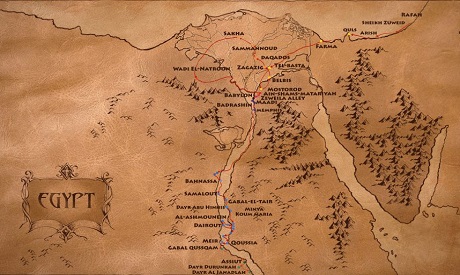
The path of the journey of The Holy Family to Egypt (Photo: Egyptian Tourism Authority)
Egypt's Ministry of Local Development announced on Monday that the path of the journey of the Holy Family development project will be completed by June 2020.
The ministry said that the eight governorates that witnessed the journey of the Holy Family of Jesus Christ – Cairo, Beheira, Sharqiya, Gharbiya, Kafr El-Sheikh, Minya, Assiut, and North Sinai – are currently working on the project.
The ministry explained that the work includes paving roads and developing the areas along the path travelled by the Holy Family, as well as building public toilets and rest houses, planting trees, adding road signs and painting the facades of surrounding buildings.
The ministry added that 25 archaeological sites that the Holy Family passed by and lived in during its journey to Egypt are being renovated as part of the project.
The ministry emphasised the importance of the project for the Egyptian economy, as it will stimulate religious tourism and create job opportunities.
Coordinator of the Holy Family's journey tour Nader Guirges Saad said in a phone call with Hona Al-Asema show on CBC channel that in March 2018, the Egyptian cabinet issued a decree to form a ministerial committee to carry out the project.
This decision came after the Vatican declared Egypt an official Roman Catholic pilgrimage destination following Pope Francis' visit to Egypt in April 2017.
Saad said that in 2017, a number of tourists visited some sites on the path and asked that the sites be developed and renovated.
Saad asserted that Egypt must promote religious tourism to the country, especially since religious tourism represents 27 percent of global tourism, according to the latest annual report by the World Tourism Organization.
According to Saad, the number of religious tourists visiting Egypt annually is between 300,000 and 500,000.
He explained that this number is actually low compared to the number of religious tourists who visit Jordan and Israel, whose religious sites are no more significant than Egypt’s and who receive about 1.5 million tourists per year.
Saad said that the number of religious tourists is expected to increase significantly after the new project.
Short link: